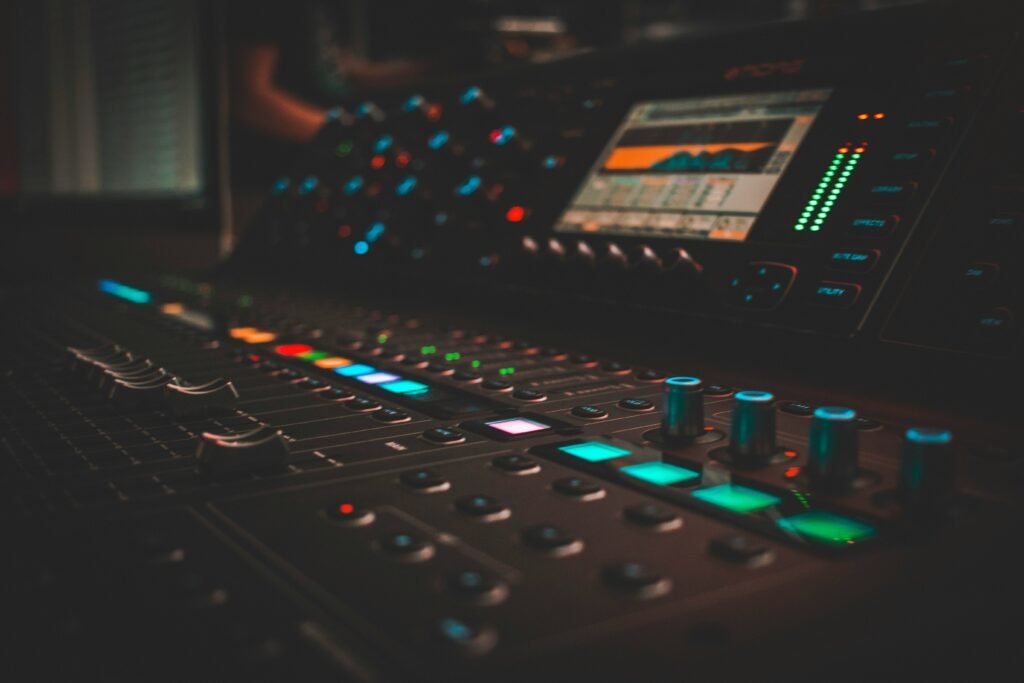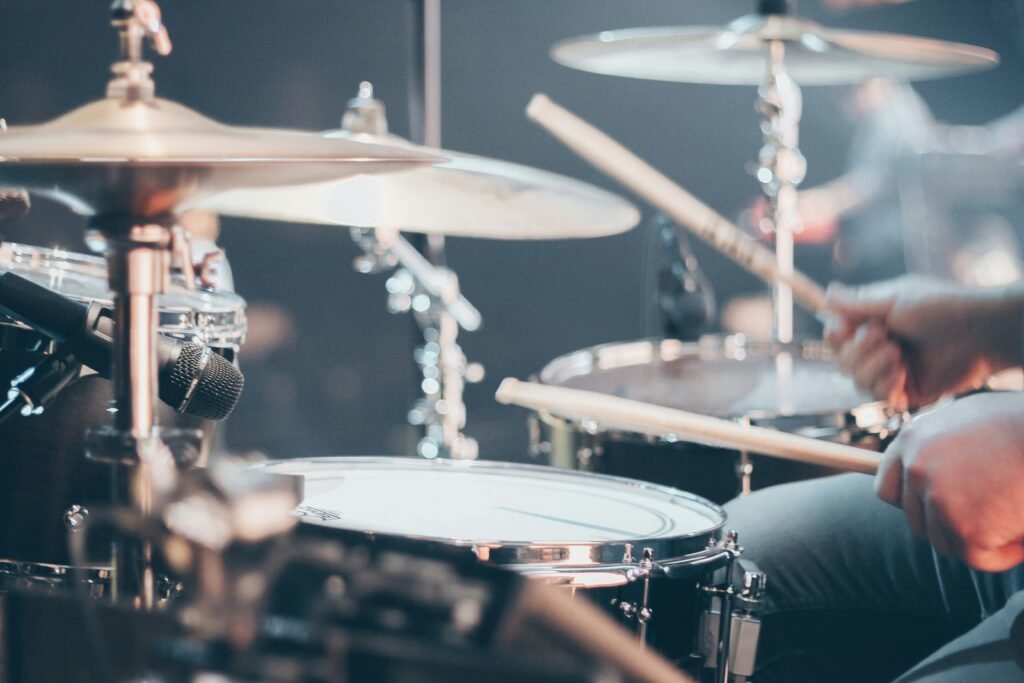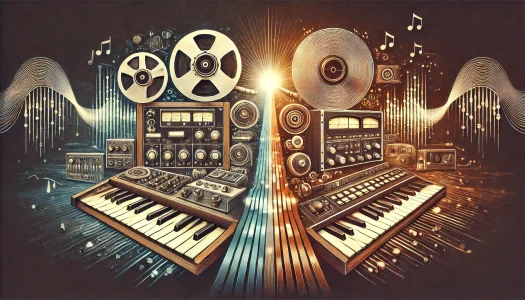“Now and Then” is a unique posthumous release from The Beatles, representing a bridge between the band’s past and modern technology. Originally written and recorded as a rough demo by John Lennon in the late 1970s, the song was left unfinished due to limitations in audio quality and the constraints of the time. Lennon’s demo, recorded on a cassette tape in his New York apartment, featured his raw vocals and piano but was marred by background noise and audio imperfections.
The surviving Beatles—Paul McCartney, George Harrison, and Ringo Starr—attempted to complete the track in the mid-1990s during the Anthology sessions, but technical limitations, particularly in isolating Lennon’s voice, led to the project being shelved. Decades later, advances in audio restoration, particularly the use of AI-driven technology, allowed the band to finally revisit the song. Using cutting-edge tools to separate Lennon’s vocals from the degraded tape, they were able to craft a finished version that seamlessly blends the old and the new.
The Origin of the Demo
Recording Equipment Used
John Lennon recorded the original demo of “Now and Then” in the late 1970s using a standard home cassette recorder, likely a consumer-grade boombox or a similar portable device. At the time, cassette tapes were a popular format for home recording due to their convenience and affordability, but the technology was far from professional studio quality. Lennon’s setup was simple—just his voice and a piano—captured using the built-in microphone of the recorder. This equipment, while suitable for sketching out ideas, had significant limitations in terms of sound fidelity, dynamic range, and clarity.
Condition of the Demo
The demo that survived was far from pristine. The cassette suffered from issues common to analog tape, including tape hiss, background noise, and uneven sound levels. In addition, the built-in microphone picked up ambient sounds, further degrading the recording quality. Lennon’s voice and piano were indistinguishable at times due to distortion and the limited frequency response of the recorder. These technical flaws made it difficult to isolate and enhance individual elements of the track, a key reason why the song was initially deemed unusable when McCartney, Harrison, and Starr first attempted to work on it in the 1990s.
The Role of AI and Machine Learning in Audio Restoration
AI Technology Used
The key to transforming John Lennon’s degraded demo of “Now and Then” into a usable track lay in the application of cutting-edge AI technology. The breakthrough came through Peter Jackson’s Machine Assisted Learning (MAL) software, originally developed for the documentary The Beatles: Get Back. MAL is a sophisticated tool capable of isolating individual audio elements from complex, noisy recordings. For this project, it was used to separate Lennon’s vocals and piano from the heavy background noise, tape hiss, and distortion present on the original cassette demo.
The software’s ability to differentiate between overlapping frequencies allowed it to extract Lennon’s voice with remarkable clarity, something that would have been impossible with traditional audio engineering methods alone. MAL’s machine learning algorithms were trained on extensive datasets of human voices and instruments, enabling it to “learn” how to identify and preserve subtle nuances of Lennon’s performance.
Restoration Process
The restoration process was multi-layered, starting with the application of MAL’s deep-learning algorithms to isolate Lennon’s voice from the rest of the audio. The software meticulously combed through the demo, distinguishing between the tonal qualities of Lennon’s vocal and the surrounding noise. Once isolated, the vocal track was cleaned up further by removing residual noise, correcting pitch inconsistencies, and improving overall clarity.
After isolating the voice, the same process was applied to the piano. While it wasn’t as central to the final production, recovering this element allowed the producers to retain the original harmonic structure of the demo. This painstaking process enabled the team to salvage Lennon’s performance and make it sound as if it had been recorded in a modern studio, giving McCartney and Starr a solid foundation on which to build the final track.
Collaborative Production Process
Paul McCartney and Ringo Starr’s Contributions
Once John Lennon’s vocals were successfully isolated and restored using AI, Paul McCartney and Ringo Starr took on the task of completing “Now and Then” by adding new layers to the demo. In modern recording sessions, McCartney recorded bass lines, played additional guitar parts, and provided backing vocals. He also added harmonies to complement Lennon’s lead vocal, aiming to recreate the signature vocal blend that had been a hallmark of The Beatles’ sound. Using contemporary studio technology, McCartney could experiment with different vocal arrangements and instrumental textures to breathe new life into the demo while preserving its original essence.
Ringo Starr contributed by recording fresh drum tracks, carefully balancing his playing to match the tone and feel of the original recording. The goal was to ensure the new elements felt organic, as if they had always belonged to the song. Starr’s drumming was kept intentionally understated, maintaining a connection to the melodic, lyrical nature of the track. Both McCartney and Starr approached their contributions with a mix of nostalgia and precision, using modern recording tools to layer these elements seamlessly alongside Lennon’s restored vocals.
Integration of Archival Elements
One of the most poignant aspects of the production was the inclusion of George Harrison’s guitar work from the mid-1990s Anthology sessions. Before the project was shelved, Harrison had recorded several guitar tracks for “Now and Then.” Using the original multitrack recordings from that period, the production team was able to carefully incorporate Harrison’s playing into the final version. These archived guitar parts were digitally cleaned and synchronized with the newly recorded material from McCartney and Starr, ensuring they fit within the modern arrangement.
Harrison’s guitar lines added depth to the track, bridging the past and present by maintaining the continuity of The Beatles’ collective musicianship. His signature slide guitar playing, melodic phrasing, and subtle textures were preserved, giving the song a distinctly Beatles-esque sound despite being completed decades later. This blend of archival and contemporary contributions gave “Now and Then” a unified, timeless quality, making it feel like a true Beatles collaboration even after the band’s official end.
Audio Engineering Techniques

Mixing and Mastering
The mixing and mastering of “Now and Then” required precision to seamlessly blend John Lennon’s original, AI-restored vocals with the new recordings contributed by Paul McCartney, Ringo Starr, and George Harrison’s archival guitar parts. Modern mixing techniques were crucial in balancing the old and new elements, ensuring they felt cohesive despite the decades-long gap between the recordings.
To start, the engineers applied EQ (equalization) to Lennon’s vocals, enhancing clarity by cutting out residual noise and boosting mid-range frequencies where his voice naturally sits. This allowed his vocal to sound clean and prominent in the mix, without losing the warmth or emotional character of the original recording. Compression was used to smooth out the dynamic range, ensuring Lennon’s voice maintained a consistent presence alongside McCartney’s bass and harmonies, Starr’s drums, and Harrison’s guitar. The goal was to ensure that no element overpowered the others while keeping the vocals as the focal point of the track.
In terms of spatial effects, subtle reverb was applied to Lennon’s vocals to give them depth and blend naturally with the modern recordings. Reverb and delay effects were also used on the instruments, particularly Harrison’s guitar and McCartney’s harmonies, to create a sense of space that unified the entire production. This spatial treatment was key to making the mix feel expansive, yet intimate—emulating the classic Beatles sound while still reflecting modern audio standards.
The mastering phase, where the final polish is applied to the track, focused on achieving consistency in volume and tone across all elements. Modern mastering tools ensured the final version was loud and clear enough for streaming platforms while preserving the song’s dynamic range and emotional subtleties.
Layering Techniques
One of the greatest challenges in producing “Now and Then” was layering the old and new elements in a way that felt natural and coherent. The producers approached this by carefully stacking the various parts to build a rich, immersive sound. Lennon’s vocal served as the foundation, with McCartney’s new instrumental and vocal parts layered on top.
Each element—bass, guitar, drums, harmonies—was introduced gradually, with attention to frequency distribution to avoid crowding the mix. McCartney’s bass and Ringo’s drums provided the rhythmic foundation, while Harrison’s guitar and McCartney’s additional guitar parts filled in the mid-to-high frequency ranges. The producers were mindful not to overwhelm Lennon’s vocal with too many modern elements, opting for a minimalist approach that preserved the song’s simplicity and emotional core.
The layered backing vocals, a Beatles hallmark, were carefully arranged to complement Lennon’s lead without overpowering it. McCartney’s harmonies were multi-tracked, layered with varying levels of reverb and subtle panning to create a lush, three-dimensional vocal effect. This layering technique allowed the track to maintain The Beatles’ signature sound, while taking full advantage of modern recording capabilities to enhance depth and clarity.
Instrumentation and Arrangement

Instruments Added
In the final version of “Now and Then,” several instruments were added to complete John Lennon’s original demo and give the track the fullness of a finished Beatles song. Paul McCartney recorded a new bass line, his signature instrument, which provided a melodic yet steady foundation that is characteristic of his playing style. McCartney also contributed additional electric guitar parts to enhance the song’s harmonic structure, complementing George Harrison’s previously recorded guitar tracks from the 1990s.
Ringo Starr added fresh drum tracks, which were carefully arranged to support the song without overshadowing its gentle, introspective mood. Starr’s drumming was intentionally restrained, favoring a minimalistic approach with soft fills and light cymbal work to match the song’s emotional tone.
Additional orchestration was also included, primarily in the form of subtle string arrangements. These strings were layered softly in the background, providing an ethereal, almost cinematic quality without overwhelming the core instrumentation. There may also have been slight keyboard effects or synthesizer pads used sparingly to add atmosphere, blending in with the orchestration to give the track more depth and space.
Maintaining the Beatles’ Sound
A major challenge in the production of “Now and Then” was maintaining the classic Beatles aesthetic while using modern recording tools and techniques. The production team succeeded by staying true to the group’s core sound elements: strong, melodic bass lines, tight vocal harmonies, tasteful guitar work, and understated drumming.
Paul McCartney’s bass playing retained his distinct melodic approach, which had always been a key ingredient in The Beatles’ sound. His bass parts weren’t just rhythmic—they interwove with the vocal lines, enhancing the song’s emotional pull while adding texture without cluttering the mix.
The use of three-part vocal harmonies, layered with McCartney’s voice alongside Lennon’s, was another critical aspect. These harmonies were treated with modern production tools like multi-tracking and reverb, but the harmonization itself stayed consistent with the vocal style that had defined The Beatles’ music.
George Harrison’s guitar work, recorded decades earlier, was preserved as a tribute to his role in shaping The Beatles’ music. His signature slide guitar and melodic phrasing were kept in the final mix, ensuring that his presence was felt as much as Lennon’s, McCartney’s, and Starr’s. The way these guitar parts were blended into the track gave it an authentic Beatles feel, even though they were recorded years apart.
Finally, the arrangement stayed relatively sparse—avoiding overproduction to maintain the organic, raw feel of Lennon’s original demo. The restraint in the production choices, such as limiting the use of orchestration and keeping the drums subtle, allowed the emotional weight of the song to come through.
Challenges and Solutions
Overcoming Technical Limitations
The production of “Now and Then” faced several significant technical challenges, primarily centered around integrating John Lennon’s decades-old analog demo with modern digital recordings. One of the biggest hurdles was the poor quality of Lennon’s original cassette demo. Recorded on a home tape recorder in the 1970s, the demo suffered from background noise, distortion, and limited frequency response. These issues presented major obstacles to extracting a clean vocal track that could be used in a polished, studio-quality production.
To overcome this, the team employed AI-driven audio restoration tools, such as Peter Jackson’s MAL software, which used machine learning algorithms to isolate Lennon’s voice from the noisy demo. The software’s ability to cleanly separate vocals from the degraded tape was a game-changer, but it wasn’t without its own challenges. While the AI could extract the vocal, the process still required careful human oversight to ensure the integrity and emotional nuance of Lennon’s performance remained intact.
Synchronizing Recordings
Once the vocal was restored, another major challenge was synchronizing analog and digital recordings. Lennon’s original demo was analog, while the contributions from McCartney, Starr, and Harrison were recorded in high-definition digital formats, decades apart. Integrating these different formats required careful time-stretching and tempo adjustment to ensure the parts aligned seamlessly. The demo’s natural imperfections, such as slight fluctuations in tempo, had to be corrected without losing the human quality of Lennon’s original performance.
In addition, the sonic differences between old analog tape and modern digital recordings had to be addressed. Analog recordings tend to have a warm, vintage tone, while digital tracks are clearer and more precise. To bridge this gap, the production team employed EQ (equalization) and dynamic processing techniques to balance the tonal qualities. This ensured that Lennon’s analog vocals and piano fit naturally alongside McCartney’s bass, Starr’s drums, and Harrison’s guitar, creating a cohesive sound that felt unified despite the technological differences.
Finally, the production had to maintain the emotional intimacy of Lennon’s original demo while enhancing it with modern production techniques. This was achieved by layering instruments and effects tastefully, ensuring that the new additions didn’t overpower the raw, vulnerable essence of Lennon’s recording.
Closing Thoughts
The completion of “Now and Then” stands as a remarkable achievement in both music history and technology. Decades after John Lennon first recorded his rough demo, modern advancements allowed The Beatles to finish a song that was once deemed impossible to complete. The use of AI technology, particularly the machine learning algorithms that restored and isolated Lennon’s vocals, made it possible to bridge the gap between the analog past and the digital present. Without these tools, Lennon’s voice and piano would have remained buried under layers of noise, forever locked in the limitations of 1970s home recording.
This project not only demonstrates the power of technology to revive lost recordings but also raises profound questions about the future of music restoration and production. AI has proven capable of performing tasks that were once the domain of human engineers—cleaning up damaged audio, enhancing performance details, and integrating disparate recordings seamlessly. While this has opened new creative possibilities, it also challenges our understanding of artistic authenticity. “Now and Then” is a Beatles song completed long after the band ceased to exist as a recording entity, yet modern tools enabled the surviving members to bring Lennon’s voice back into the mix, blending the old with the new.
